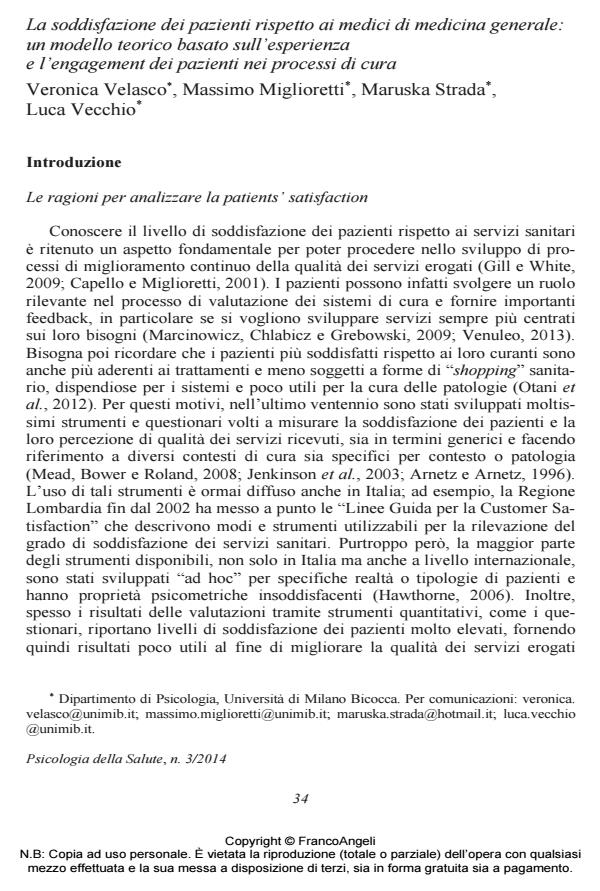Patient satisfaction regarding general practitioners: a theoretical model based on patients’ experience and engagement in care process
Journal title PSICOLOGIA DELLA SALUTE
Author/s Veronica Velasco, Massimo Miglioretti, Maruska Strada, Luca Vecchio
Publishing Year 2014 Issue 2014/3
Language Italian Pages 24 P. 34-57 File size 122 KB
DOI 10.3280/PDS2014-003003
DOI is like a bar code for intellectual property: to have more infomation
click here
Below, you can see the article first page
If you want to buy this article in PDF format, you can do it, following the instructions to buy download credits

FrancoAngeli is member of Publishers International Linking Association, Inc (PILA), a not-for-profit association which run the CrossRef service enabling links to and from online scholarly content.
This study focuses on patient satisfaction towards general practitioners (GPs) and, in particular, on the process and criteria used by patients to evaluate their experience of care. The aim of the study is to develop a theoretical model that is able to explain how patients satisfaction toward their GPs is built and to identify its determinants. For this purpose 24 GPs were interviewed along with their patients (48). The GPs interviews focused on the organizational features of the service and the factors that may influence patient satisfaction. The interviews with patients concerned their experience and expectations about their GPs. All interviews were analyzed according to the Grounded Theory approach. The results of the analysis led us to develop a model where patients’ satisfaction about their GPs seems to revolve around three dimensions. The first one concerns a relationshipwise dimension, considering both the personal relationship between practitioner/patient and the relationship with the GP as a point of access to health care system. The second dimension is about the preferences shared by doctors and patients concerning the care approach, that is: a traditional medical approach rather than a patient centered approach. The third dimension refers to the dynamic among expectations and patient satisfaction outcomes.
Keywords: Patient satisfaction, General practitioners, Grounded Theory.
Veronica Velasco, Massimo Miglioretti, Maruska Strada, Luca Vecchio, La soddisfazione dei pazienti rispetto ai medici di medicina generale: un modello teorico basato sull’esperienza e l’engagement dei pazienti nei processi di cura in "PSICOLOGIA DELLA SALUTE" 3/2014, pp 34-57, DOI: 10.3280/PDS2014-003003